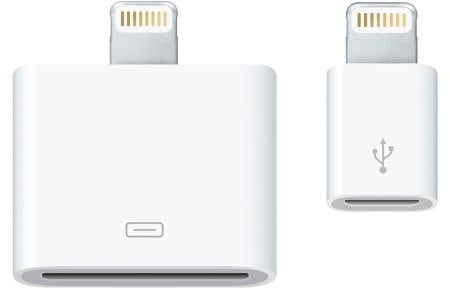If there’s one thing the pre-iPhone 5 leaks showed us, it’s that Apple’s iPod dock connector was likely undergoing some serious changes with regards to size and design. True enough, when Apple announced its 2012 flagship smartphone this week, the dock had changed. So what is this new Lightning connector, and what happens to all of your old docks and appcessories?
Existing for nine years and serving as Apple’s main way to charge and move data to and from iDevices, the iPod docking port is about to become very different.

Landing on all new and (likely) upcoming Apple products, this new docking port can be seen on the iPhone 5, and 2012 models of the iPod Touch and iPod Nano. It’s slimmer, smaller, reversible and easier to plug in, and is called “Lightning” by Apple, probably to fit in with the “Thunderbolt” name Apple uses on its other high-speed port.
Lightning is a completely different design to the original iPod dock connector, with the now old-school 30 pin docking connector being shifted to a 9 pin design that can be used on either side, compared to the original which could only be plugged in one way.
A smaller dock – like a smaller SIM – means Apple can play around with the internal design of the iPhone and move parts around, coming up with a better and more efficient product, but there is a catch: your old iPod dock products may not work.

To try and combat this, Apple will be releasing a $35 Lightning to 30-pin adapter that you can plug into older devices, helping to update them, so to speak, to the new version.
Some devices won’t have a problem with this, as the converter will allow the new iPods and iPhones to charge, send and receive data, and from what we understand, digital audio.
But not every dock will like the device, and chances are there will be quite a few iPod docks that are incompatible with the accessory and new devices.
From what we know, video out will be one of the things that’s missing, already aggravating some dock owners. Analog audio will also be missing, although that was removed from the 30 pin iPod dock in the iPad 2 and iPhone 4S generation, as this journalist noted when he tried an iPhone microphone on his iPad and found it didn’t work.
There’s also now a problem of inconvenience, as no one wants to buy a new product and an extra accessory or two just to make their old gadgets work.

For now, your best bet is to keep using your docks and iDevices that already work, but if you have an iPod dock that you love, be aware that there’s a chance even with the accessory, it may not function as well.
Here’s hoping they all do, but we know that won’t be the case.
If you’re considering upgrading to the iPhone 5, iPod Touch, or iPad Nano, it might be worth factoring in the cost of a new dock, as we’re going to see plenty of updates in the next few months for the support of the Lightning dock.









Again the people at apple scewing over their belovered clones